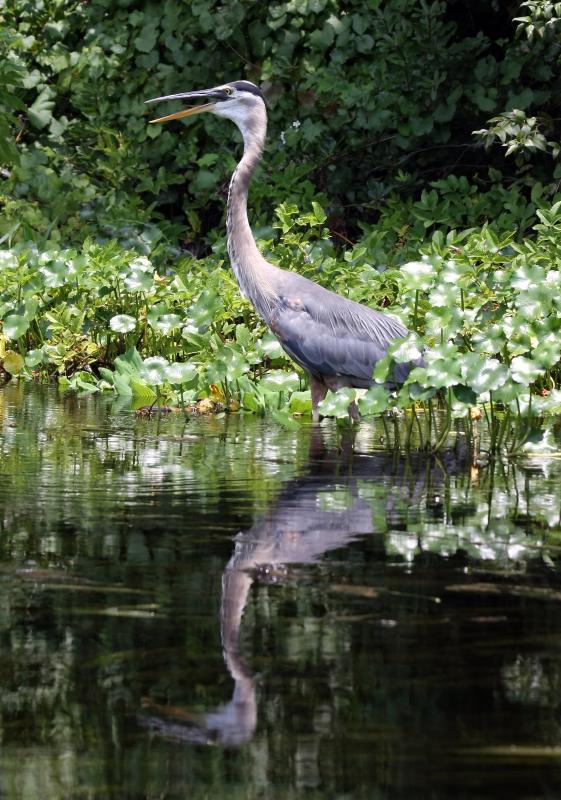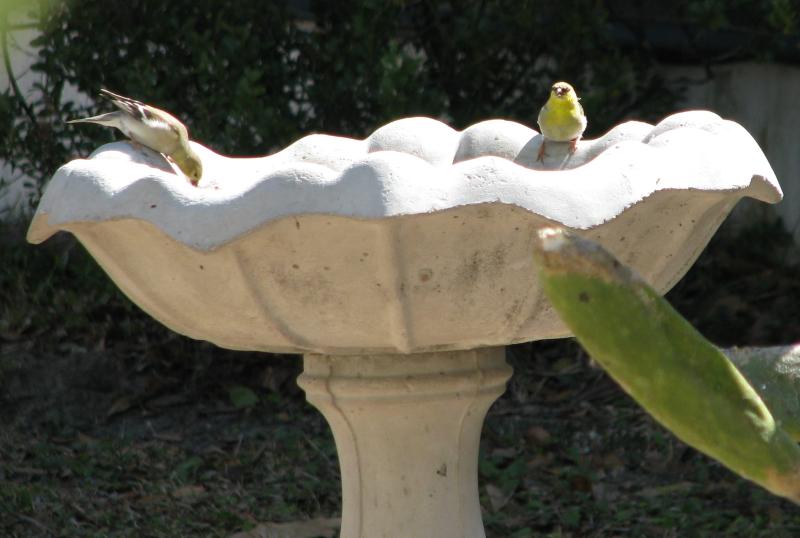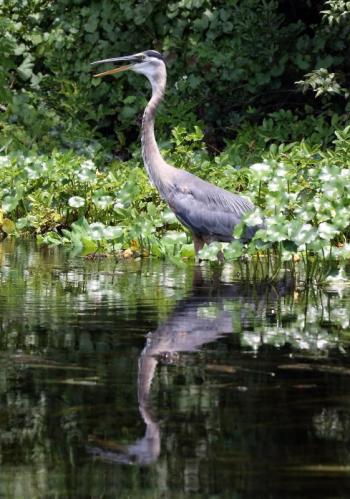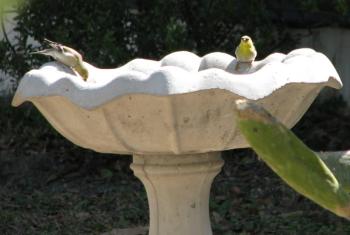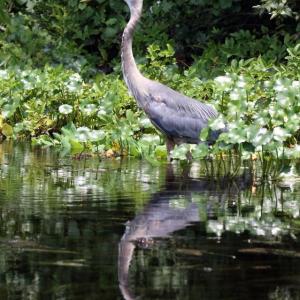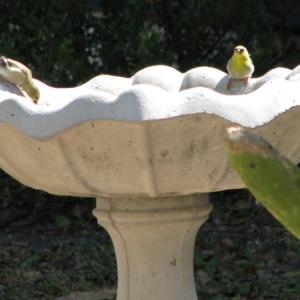Birds and Heat Waves
The oppressive heat and humidity have finally broken for us here in Maine, but many parts of the U.S. and other regions of the world are still enduring record-breaking heat. We know that high temperatures that continue on for long stretches cause all kinds of health problems for us humans – tragically, many people die. The circulatory system, including the heart, can be stressed, organs may not function properly, and without lots of water and ways to cool down the body, compounding and dangerous health issues can be set into motion.
Birds’ bodies, too, are stressed at high temperatures that continue for long periods. Like us humans and other animals, birds can help themselves by doing things like trying to stay in the cooler shade of a tree and remaining less active during the hottest part of the day. Their warm feather coats don’t let them sweat like we do, but you will sometimes see birds with their mouths open and panting on hot days.
When water is available to them, whether in a bird bath or natural situation like a pond, lake, stream, or river, many birds will flutter and splash to wet their feathers. Birds like swallows and swifts, whose bodies are made for flying and thus can’t use a bird bath, will skim low over the water and lightly brush the surface to wet their breast feathers. Parent birds with young will wet their breast feathers and brood the young apparently to keep them cool.
Do diving birds like loons and cormorants ever dive down into the depths just to cool off? Do hawks and ospreys or eagles ever soar up really high in search of the cooler temperatures of higher elevations? Is there any way we humans could ever find out?
For species whose nests are on the ground and in the open like terns, gulls, plovers, and sandpipers, the incubating adults in some parts of the world have to endure incredibly hot temperatures and use their bodies and wings to shield the eggs, and later the newly hatched chicks, from the heat. The increasing numbers of such ground-nesting birds that are using flat rooftops are finding that such locations often get baking hot. Still-flightless chicks have been known to leap off the roofs to escape the heat, resulting in baby birds with broken wings and other injuries. Some even have been found in these situations with burns on their feet. Birds like bluebirds and tree swallows that nest in nest boxes that are typically fully exposed to the sun also may have to endure extreme temperatures. Some don’t survive.
Adults feeding young during these heat waves must continue the strenuous activity required to find food for their offspring even when it is very hot. Higher temperatures add more physiological stress to parent birds during the nesting season. Even if such weather doesn’t result in lower nest success, the parents are at risk of suffering ill effects.
Taking action to reduce climate change pollution like supporting responsibly sited renewable energy projects and making our homes and businesses more energy efficient will, in the long-run, increase the chances of keeping these extreme heat waves from getting worse. That’s better for people, and for birds!
Jeffrey V. Wells, Ph.D., is a Fellow of the Cornell Lab of Ornithology and Vice President of Boreal Conservation for National Audubon. Dr. Wells is one of the nation's leading bird experts and conservation biologists. He is a coauthor of the seminal “Birds of Maine” book and author of the “Birder’s Conservation Handbook.” His grandfather, the late John Chase, was a columnist for the Boothbay Register for many years. Allison Childs Wells, formerly of the Cornell Lab of Ornithology, is a senior director at the Natural Resources Council of Maine, a nonprofit membership organization working statewide to protect the nature of Maine. Both are widely published natural history writers and are the authors of the popular books, “Maine’s Favorite Birds” (Tilbury House) and “Birds of Aruba, Bonaire, and Curaçao: A Site and Field Guide,” (Cornell University Press).

